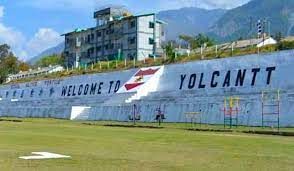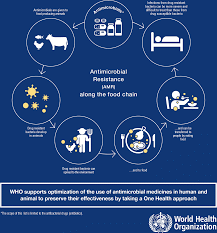UPSC Daily Current Affairs- 9th July 2023 | Current Affairs & Hindu Analysis: Daily, Weekly & Monthly PDF Download
GS-I
Ubinas volcano
Why in News?
Recently, Peru declared a state of emergency for 60 days in areas around Ubinas volcano.
Background:-
- According to the Geophysical Institute of Peru, the volcano has been spewing ash and gas since earlier this week.
- The smoke cloud has travelled over towns that are 10 kilometers away from the volcano, according to the institute. Some 2,000 people live in the affected areas.
- Ubinas is an active stratovolcano.
- Stratovolcano: it is a conical volcano built up by many layers (strata) of hardened lava.
- It is located in the Moquegua Region of southern Peru, approximately 60 kilometers east of the city of Arequipa.
- It is part of the Central Volcanic Zone of the Andes and stands at an elevation of 5,672 meters above sea level.
- The volcano’s summit contains a 1.4-kilometer-wide and 150-meter-deep caldera, within which lies a smaller crater.
- This distinct feature adds to the volcano’s geological significance.
- Caldera: it is a large cauldron-like hollow that forms shortly after the emptying of a magma chamber in a volcano eruption.
- Ubinas I and Ubinas II: The volcano exhibits an upwards-steepening cone shape, with a notable notch on its southern side.
- The lower part is referred to as Ubinas I while the steeper upper section is known as Ubinas II.
- This represents different stages in the volcano’s geological history.
- The region where Ubinas is situated falls within the Ring of Fire.
- Ring of Fire: an area around the Pacific Ocean known for its high volcanic and seismic activity.
History of Volcanic activity:-
- Ubinas is recognized as the most active volcano in Peru.
- It has a history of small to moderate explosive eruptions and persistent degassing.
- Notable Eruptions: The volcano has experienced notable eruptions throughout history, including the 2006–2007 event that resulted in eruption columns, ash fall, health concerns, and evacuations in the region.
- Recent Activity: From 2013 to 2017, Ubinas exhibited lava flow within the crater, accompanied by ash falls, leading to further evacuations in nearby towns.
Source: AIR
How India can leverage its biggest strength
Why in News?
The next 25 years could be the golden years for the country, provided it makes the best use of its favourable demographic composition.
About Demographic dividend:
- Demographic dividend, as defined by the United Nations Population Fund (UNFPA), is “the economic growth potential that can result from shifts in a population’s age structure, mainly when the share of the working-age population (15 to 64) is larger than the non-working-age share of the population (14 and younger, and 65 and older)”.
India’s demographic dividend:
- India’s average age is 29 years, whereas the average age in US, China, France, Germany and Japan is 38, 38, 42, 45 and 48 years, respectively.
- Therefore, India is the youngest among the most populous countries in the world.
Advantages of India’s demographic dividend:
- Higher Economic Growth: A large and young working-age population can increase the labour supply, productivity, savings, and investment in the economy, leading to higher GDP growth and per capita income.
- Greater Competitiveness: A skilled workforce can enhance India’s competitiveness in the global market, especially in labour-intensive sectors such as manufacturing, services, and agriculture.
- India can also benefit from the rising demand for its exports in the ageing markets of developed countries.
- Social Development: It can contribute to social development by improving health, education, gender equality, and social cohesion.
- An empowered population can also participate more actively in democratic processes and civic engagement.
- Innovation and Entrepreneurship: A creative population can foster innovation and entrepreneurship in various fields, such as science, technology, arts, and culture.
- An aspirational population can also create new markets and opportunities for economic diversification.
Challenges associated with Demographic dividend:
- Asymmetric demography: The growth in the working-age ratio is likely to be concentrated in some of India’s poorest states and the demographic dividend will be fully realized only if India is able to create gainful employment opportunities for this working-age population.
- Lack of skills: Most of the new jobs that will be created in the future will be highly skilled and lack of skill in Indian workforce is a major challenge.
- India may not be able to take advantage of the opportunities, due to a low human capital base and lack of skills.
- Low human development parameters: India ranks 130 out of 189 countries in UNDP’s Human Development Index, which is alarming.
- Therefore, health and education parameters need to be improved substantially to make the Indian workforce efficient and skilled.
- Informal nature of economy in India is another hurdle in reaping the benefits of demographic transition in India.
- Jobless growth: There is mounting concern that future growth could turn out to be jobless due to de-industrialization, de-globalization, the fourth industrial revolution and technological progress.
- As per the NSSO Periodic Labour Force Survey 2017-18, India’s labour force participation rate for the age-group 15-59 years is around 53%, that is, around half of the working age population is jobless.
Indian government’s initiatives to reap the demographic dividend in India:
- The government has launched programmes like Jan Shikshan Sansthan, Pradhan Mantri Kaushal Vikas Yojana, and National Apprenticeship Promotion Scheme to improve employability through skilling, re-skilling, and up-skilling.
- These initiatives aim to make the Indian labour force more productive and efficient. The MSDE Vision 2025 further aims to improve the linkage between education and skill.
- The Ayushman Bharat and Swachh Bharat Mission seek to improve health equity in India.
- The Pradhan Mantri Bhartiya Janaushadhi Pariyojana aims to make drug prices affordable and accessible, enhancing overall public health.
- The National Education Policy 2020, alongside the Samagra Shiksha programme, is focused on providing inclusive, equitable, and quality education at all school levels, ensuring a productive labour force in the future.
- Recognizing MSMEs as the backbone of Indian manufacturing, the government has endeavoured to support them in improving competitiveness, achieving scale, digital infrastructure, technology upgrades, and branding.
- The government has introduced flagship programmes like Skill India, Make in India, and Start-up India to enhance the productivity of the labour force and to foster innovation and entrepreneurship.
Way Forward:
If India has to reap the benefits of ‘demographic dividend’ in the years ahead, it is imperative that investments in social infrastructure by way of education, skill development, training and provision of health care facilities are made to enhance productivity of workforce and welfare of the population.
Source: Indian Express
GS-II
Data Protection Bill 2022
Why in News?
The Union Cabinet cleared the Digital Personal Data Protection (DPDP) Bill 2022, paving the way for it to be introduced in Parliament.
History of Digital Personal Data Protection:
- In 2017 the S. Puttaswamy vs. Union of India judgement declared that right to privacy a fundamental right as part of right to life and liberty under Article 21 of the Constitution.
- To protect the personal data the data protection Bill has been in the works since 2018 when a panel led by Justice B N Srikrishna had prepared a draft version of the Bill.
- It is India’s first attempt to domestically legislate on the issue of data protection.
- The government has made several revisions to this draft and introduced it as the Digital Personal Data Protection Bill, 2022.
Provisions of the Bill:
- The Bill will apply to the processing of digital personal data in India, whether it is collected online or offline and then digitized.
- It will also apply to the processing of digital personal data outside of India if it involves offering goods or services or profiling individuals in India.
- Personal data may be processed only for a lawful purpose for which an individual has given consent.
- Consent may be deemed in certain cases.
- Data fiduciaries will be obligated to maintain the accuracy of data, keep data secure, and delete data once its purpose has been met.
- The Bill grants certain rights to individuals including the right to obtain information, seek correction and erasure, and grievance redressal.
- The central government may exempt government agencies from the application of provisions of the Bill in the interest of specified grounds such as security of the state, public order, and prevention of offences.
- The central government will establish the Data Protection Board of India to adjudicate non-compliance with the provisions of the Bill.
Significance of personal data protection in India:
- Privacy protection: It guarantees that an individual’s privacy is not breached, as was the case with the Aadhaar data leak in 2018.
- It helps to avoid identity theft and other types of fraud.
- For example, consider the 2018 Cambridge Analytica controversy.
- Data accuracy is ensured through personal data protection, which guarantees that the data is correct and up to date.
- Personal data protection avoids data abuse and unlawful access, as shown in the WhatsApp data-sharing scandal in 2021.
- Personal data protection guarantees that data is safe and protected from cyberattacks.
- Personal data protection secures sensitive data, such as the health and financial data of persons, as well as sensitive health data.
- Individual empowerment: As previously said in 2018 Justice Srikrishna Committee Report Recommendations, personal data protection empowers people by giving them control over their personal data.
- Compliance with worldwide standards: Compliance with global data protection standards, such as GDPR compliance, requires personal data protection.
Concerns associated with the Bill:
- Government Control: The Bill is learnt to have prescribed that the central government can exempt “any instrumentality of the state” from adhering to the provisions on account of national security, relations with foreign governments, and maintenance of public order among other things.
- The control of the central government in appointing members of the data protection board — an adjudicatory body that will deal with privacy-related grievances and disputes between two parties — is learnt to have been retained as well.
- Dilutes the Right to Information (RTI) Act as personal data of government functionaries is likely to be protected under it, making it difficult to be shared with an RTI applicant.
- No Criminal Liability: The Bill only prescribes monetary penalties (under Schedule 1 of the DPDP Bill) for breaches and non-compliances and limits such penalties to breaches/non-compliances that the Data Protection Board determines to be ‘significant’.
- The DPD Bill has done away with criminal liabilities, as well as penalties that are directly linked to the turn-over or revenue of an erring Data Fiduciary.
- Penalties vary from INR 50 crore to INR 250 crore. Section 25 stipulates maximum penalty to be limited to INR 500 crore.
- Data of Children: The Bill requires parental consent for age less than 18 years.
- Parental consent would be required every time they want to access the internet.
Global Scenario:
- EU model: The GDPR focuses on a comprehensive data protection law for processing of personal data.
- It has been criticised for being excessively stringent, and imposing many obligations on organisations processing data, but it is still the template for most of the legislation drafted around the world.
- US model: Privacy protection is largely defined as “liberty protection” focused on the protection of the individual’s personal space from the government.
- It is viewed as being somewhat narrow in focus, because it enables collection of personal information as long as the individual is informed of such collection and use.
- China model: New Chinese laws on data privacy and security issued over the last 12 months include the Personal Information Protection Law (PIPL), which came into effect in November 2021.
- It gives Chinese data principals new rights as it seeks to prevent the misuse of personal data.
Way Forward:
While protecting the rights of the data principal, data protection laws need to ensure that the compliances for data fiduciaries are not so onerous as to make even legitimate processing impractical.
The challenge lies in finding an adequate balance between the right to privacy of data principles and reasonable exceptions, especially where government processing of personal data is concerned.
Source: Indian Express
The abolition of cantonments: What does it entail for urban local bodies?
Why in News?
Recently, the Ministry of Defence took a significant step towards disbanding cantonments in India with the notification for the abolition of Yol Cantonment in Himachal Pradesh. This move is part of a larger plan to convert military areas into exclusive military stations, while merging civilian areas with neighboring urban local bodies (ULBs).
Historical Context
- The 62 cantonments spread unevenly across the country are considered archaic colonial legacies that originated after the East India Company’s victory in the battle of Plassey.
- These cantonments were primarily established for quartering troops, but over time, civilian populations settled within their jurisdictions to provide support services.
- The current administration of cantonments is under cantonment boards, which function as deemed municipalities and perform civic duties similar to ULBs
Advantages for the Military
- Focus on Core Responsibilities: By separating civilian areas from military stations, the military commanders would be relieved of non-military responsibilities. This would allow them to concentrate more on their core duties, such as training troops and maintaining war preparedness.
- Elimination of Political Involvement: In some instances, army officers have found themselves getting involved in local politics within cantonments, despite lacking background and training in this area. The merger of civilian areas into ULBs would reduce the army’s involvement in local political matters.
- Homogeneous Management: The merger would enable uniform and homogeneous management of military stations strictly under the control of the army. This would facilitate streamlined decision-making processes and enhance operational efficiency within military establishments.
- Enhanced Security: With civilian areas separated from military stations, there is a potential improvement in security arrangements. Military installations can implement stricter security measures without concerns about civilian populations living in close proximity.
- Increased Flexibility: Without the burden of managing civilian functions, the military can respond more flexibly to changing security needs and allocate resources more effectively. This flexibility can enhance the overall operational capabilities and readiness of the armed forces.
Benefits for Civilian Residents
- Property Regulations: Relief from restrictive property regulations, making it easier for residents to transfer, mutate, and develop properties without excessive limitations.
- Reduced Inconvenience: Mitigation of road closures within cantonments, resulting in less inconvenience for civilian residents in terms of movement and transportation.
- Access to Welfare Schemes: Integration with ULBs grants civilians access to social welfare schemes provided by the government, which were previously unavailable due to the cantonment’s non-plan sector status.
- Economic Opportunities: Removal of stifling restrictions on construction and economic activities encourages growth and urbanization in merged areas, potentially boosting employment and economic opportunities for residents.
- Municipal Laws: Residents come under the jurisdiction of ULBs, ensuring that municipal laws and services are applicable to them, leading to better governance and provision of essential services such as water supply, sanitation, education, and street lighting.
Potential Concerns
- Uncontrolled Construction: There is a possibility that the merger of cantonment areas into ULBs may lead to uncontrolled construction and commercialization, particularly in hill station cantonments. This could result in the loss of the charm and environmental integrity of these areas.
- Insufficient Services: ULBs may struggle to provide quality services and governance to the merged areas. Existing cities already face challenges in delivering services, and the addition of new areas with limited revenue may further strain the capacity of ULBs, potentially resulting in inadequate infrastructure, healthcare, and other essential services.
- Environmental Impact: The removal of restrictions on construction and economic activities may have negative environmental consequences, such as increased pollution, strain on natural resources, and encroachment on ecologically sensitive areas. Proper environmental safeguards should be in place to mitigate these potential impacts.
- Financial Constraints: The addition of merged areas with insufficient revenue may exacerbate the financial constraints faced by ULBs. The states and central government need to provide adequate financial support to ensure that ULBs can meet the needs of the merged areas and maintain a sustainable level of service delivery.
- Resistance to Resource Allocation: Existing councillors and political constituencies may resist diverting funds from their own areas to support the merged areas. This resistance could impede the equitable distribution of resources and hinder the development and provision of essential services in the merged areas.
Challenges for ULBs
- Insufficient Resources: ULBs already face financial constraints in providing adequate services to their existing areas. The addition of merged cantonment areas may further strain their limited resources, making it challenging to meet the increased demands for infrastructure, healthcare, education, and other essential services.
- Capacity Constraints: ULBs may struggle with limited manpower, technical expertise, and administrative capacities to effectively govern and manage the merged areas. The sudden addition of new areas may overwhelm the existing administrative setup, hindering their ability to provide efficient and responsive governance.
- Revenue Generation: Merged cantonment areas may have limited revenue-generating potential, which can pose challenges for ULBs in generating sufficient funds to sustain and improve services. The existing revenue streams of ULBs may need to be re-evaluated, and new strategies for revenue generation may need to be implemented to support the merged areas.
- Resistance from Existing Councillors: The allocation of resources from existing political constituencies to the merged areas may face resistance from incumbent councillors who may prioritize their own areas over the newly merged ones. This resistance could hinder the equitable distribution of resources and lead to disparities in service provision.
- Service Delivery and Governance: ULBs may struggle to provide quality services, such as water supply, sanitation, healthcare, and infrastructure development, to the merged areas. The lack of adequate resources, infrastructure, and governance capacity may result in substandard service delivery and governance challenges in the merged areas.
Way forward
- Comprehensive Planning: The government should undertake comprehensive urban planning exercises to ensure orderly and sustainable development in the merged areas.
- Strengthening ULBs: To address the challenges faced by ULBs, the government should provide adequate financial resources, technical support, and capacity-building programs.
- Public Participation: Engaging the public and stakeholders in the planning and decision-making processes is crucial. This can be achieved through consultations, public hearings, and feedback mechanisms.
- Monitoring and Evaluation: Regular monitoring and evaluation mechanisms should be established to assess the progress and impact of the merger. This would help identify any shortcomings or challenges and enable timely corrective measures to be implemented.
- Collaborative Approach: Collaboration between the central and state governments, ULBs, and other relevant stakeholders is essential. A coordinated approach will facilitate effective decision-making, resource allocation, and the implementation of policies and programs.
- Long-term Perspective: The merger should be viewed from a long-term perspective, considering the social, economic, and environmental implications. It is important to strike a balance between development aspirations and the preservation of the cultural and environmental heritage of the merged areas
Conclusion
- The decision to merge civilian areas of cantonments with ULBs carries both advantages and challenges. While the military stands to benefit from the separation, civilians can expect relief from restrictive regulations and improved access to welfare schemes. However, concerns about uncontrolled development and the ability of ULBs to deliver quality services warrant attention. Future mergers emphasize the need for government intervention to adequately fund cities and support their expanding responsibilities.
Source: The Hindu
GS-III
Salvage and Explosive Ordnance Disposal Exercise (SALVEX)
Why in News?
The Seventh edition of the Indian Navy – US Navy (IN – USN) Salvage and Explosive Ordnance Disposal exercise, SALVEX was conducted recently.
About SALVEX:-
- It was conducted from 26 Jun – 06 Jul 23 at Kochi.
- Started :
- Background: Indian Navy(IN) and US Navy(USN) have been participating in joint Salvage and EOD exercises since
- EOD: it is a specialized technical area in military and law enforcement.
- The exercise saw participation from both the navies which included the ships – INS Nireekshak and USNS Salvor in addition to Specialist Diving and EOD teams.
- Duration: it spans over 10 days.
Key engagements and outcomes:-
- Shared Learning on Maritime Salvage: The Diving teams from both countries engaged in the exchange of experiences, lessons, and best practices in maritime salvage operations.
- Training Synergies on EOD Operations: The exercise provided an ideal platform for joint training exercises, allowing divers and EOD teams to enhance their interoperability and refine their skills.
- Mastery of Mine Detection and Neutralization: The participating divers received comprehensive training in the detection and neutralization of mines, enabling them to mitigate potential threats in underwater environments.
- Efficient Wreck Location and Salvage Techniques: The exercise focused on honing the teams’ abilities to locate and salvage wrecks, a critical skill for ensuring safe navigation and effective disaster response.
Source: PIB
The challenge of Antimicrobial Resistance (AMR), and how to confront it effectively
Why in News?
Antimicrobial Resistance (AMR) is today reckoned among the most ominous threats confronting Global Public Health. There is an urgent need for a collective and comprehensive approach to address the global threat of AMR and the role of various stakeholders in prevention, control, and surveillance efforts is crucial.
Definition:
- Antimicrobial resistance, means that certain drugs that were once effective in treating infections caused by bacteria, viruses, fungi, or parasites no longer work because the pathogens have become resistant to them.
- In simpler terms, it is when the germs that make us sick become “immune” to the medicines we use to treat them.
Prevalence of AMR:
- According to recent estimates, in 2019, 1.27 million deaths were directly attributed to drug-resistant infections globally. By 2050, up to 10 million deaths could occur annually.
- If unchecked, AMR could shave US$ 3.4 trillion off GDP annually and push 24 million more people into extreme poverty in the next decade.
- A 2022 study by the Indian Council of Medical Research (ICMR) revealed that resistance to broad-spectrum antimicrobials increases by 5% to 10% every year.
AMR: A concern for global public health
- Rising Resistance: The infections caused by the pathogens including bacteria, viruses, fungi, and parasites, are increasingly developing resistance to antimicrobial drugs which is becoming more challenging to treat effectively.
- Treatment Failures: AMR can lead to treatment failures, as commonly used antibiotics, antivirals, antifungals, and antiparasitic drugs may no longer be effective against resistant strains.
- Healthcare Impact: AMR increases the complexity and cost of treatment, prolongs hospital stays, and requires the use of stronger and more expensive drugs. Healthcare-associated infections caused by drug-resistant pathogens are a particular concern.
- Limited Drug Pipeline: The development of new antimicrobial drugs has slowed down in recent years. There is a lack of new effective treatments to replace those that are losing effectiveness due to resistance.
- Global Spread: AMR is a global issue that knows no boundaries. Resistant pathogens can spread between countries through travel and trade, and international cooperation is crucial.
Current Scenario of AMR prevention and National Action Plans
- Over the last ten years, the prevention, control, and response to AMR has been a high priority for most national governments, international organisations (such as the WHO, FAO, OIE), healthcare communities, and civil society, etc.
- In 2015, the WHO launched the Global Action Plan (GAP) on AMR, which provides a strategic framework for countries to develop their national action plans
- National action plans have been prepared by many countries so far.
- India’s NAP was approved in 2017. It is understood that NAP 2.0 is now envisaged.
- AMR is an important priority in the G20 health agenda under India’s presidency.
India’s national action plan to combat AMR
- Coordinated Action: India’s NAP emphasizes coordinated action by the government and non-government sectors. It involves a whole of government approach, involving sectors like Health, Animal Husbandry, Fisheries, Agriculture, Dairy, Pharmaceuticals, and Biotechnology.
- Advocacy and Awareness: The plan focuses on advocacy and awareness-building activities to educate healthcare professionals, policymakers, and the general public about responsible antimicrobial use and AMR prevention.
- Community Involvement: India’s NAP It emphasizes engaging and empowering communities to promote responsible use of antimicrobials.
- Infection Prevention and Control: The NAP emphasizes infection prevention and control measures to reduce the spread of AMR. This includes promoting appropriate hygiene practices and implementing infection control protocols in healthcare settings.
- National AMR Surveillance Network (NARS Net): India has established the National AMR Surveillance Network to monitor and track the prevalence and patterns of AMR across the country. This surveillance system helps in generating data for evidence-based interventions.
- Research and International Collaboration: India’s NAP emphasizes the importance of research on AMR and encourages international collaboration in this field.
Need for a concerted, combined effort to address AMR
- One Health Approach: AMR requires a One Health approach, recognizing the interconnectedness of human health, animal health, and the environment. Collaborative efforts among human and veterinary healthcare sectors, agriculture, environmental agencies, and other stakeholders are necessary to tackle AMR comprehensively.
- Stakeholder Involvement: The sectors responsible for food, drinking water, and the environment should share equal ownership in addressing AMR. Regulating antibiotic access and usage in non-human consumption sectors, such as animal husbandry and poultry, is vital.
- State and Local Engagement: Implementation of infection control measures, regulation of pharmacies, treatment of sewage and pharmaceutical effluents, and AMR surveillance are primarily implemented at the state level.
- Environmental Considerations: Efforts should be made to prevent the contamination of the environment by untreated wastewater and effluents, including those from antibiotics manufacturing units and healthcare facilities. Effective sanitation and waste treatment infrastructure are necessary to combat AMR.
- Surveillance and Data: Robust surveillance systems are crucial to monitor AMR patterns and trends. Collecting and analyzing data on antimicrobial use, resistance prevalence, and treatment outcomes helps inform evidence-based interventions.
What’s more?
- Parallel efforts on a war footing are needed for the discovery and commercialization of new antibiotics and new antimicrobials. Such efforts must be incentivized.
- Social media and its numerous platforms have captured the imagination of people around the world. The influence of social media on our mind and behaviour cannot be denied. We
- Considering its influence on our mind and behaviour, social media and its numerous platforms must be leveraged to spread the message of AMR.
- Objective should be to inculcate community realisation for rational and correct use of antimicrobials.
Conclusion
- Addressing the global challenge of AMR demands a collective and coordinated effort involving various stakeholders. Embracing novel solutions, such as new diagnostics, alternative treatments, and technology-driven interventions, is essential. By embracing these measures, we can protect public health, alleviate economic burdens, and secure a healthier future for all.
Source: The Hindu
|
38 videos|5293 docs|1118 tests
|






















